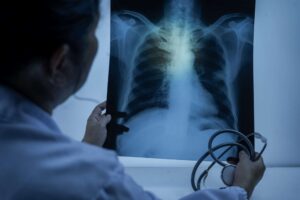With the arrival of winter, the cases of respiratory diseases multiply worldwide, filling emergency rooms with patients with various symptoms, cough Persistent the difficulty in breathing.
In the midst of this known scenario, a less evident villain begins to worry doctors and experts: silent pneumonia.
What is and how silent pneumonia is?
Silent pneumonia, also known as “Walking Pneumonia”, is a pulmonary infection caused in most cases by bacteria Mycoplasma pneumoniae.
It is named because it usually has lighter symptoms than common pneumonia, allowing the patient to continue their daily activities even though they are infected.
Therefore, the disease is often unnoticed or is confused with a strong flu or a persistent cold.
The infectious agent Mycoplasma pneumoniae It belongs to a group of bacteria that do not have cell wall, which makes it difficult to detect in common exams and make treatment with some antibiotics less effective.
Transmission occurs mainly through saliva droplets expelled during speech, cough or sneezing. Closed environments, such as schools, offices and public transport, favor the propagation of microorganism.
Unlike classic bacterial pneumonia, which may be abruptly with high fever, chills and intense chest pain, silent pneumonia gradually settles.
Symptoms include persistent dry cough, tiredness, headache, low fever, hoarseness and light breath. In some cases, the person does not even realize that he has a pulmonary infection, which increases the risk of complications, especially in vulnerable populations.
Read more:
The infection does not usually occur without contact with contaminated people, although it is possible that the bearer is asymptomatic and still transmits the disease.
Therefore, outbreaks in community environments are common, especially among children, adolescents and young adults. The diagnosis is made through clinical evaluation and can be complemented with laboratory and image examinations such as chest radiography, which can reveal areas of lung inflammation even in the absence of intense symptoms.
Treatment usually involves antibiotics in the macrolide or tetracyclines group, as well as rest, hydration and fever control.
Silent pneumonia has a cure, but it can take weeks to completely disappear.
When not treated properly, it can evolve to more serious paintings such as bilateral pneumonia, secondary infections, or even respiratory failure, especially in the elderly, immunosuppressed and people with chronic diseases. In rare cases, it can lead to death.
The main difference between traditional and silent pneumonia is the degree of intensity of symptoms. Common pneumonia is usually more aggressive and requires hospitalization in many cases.
Already the silent, although less disabling, demands attention, as it may go unnoticed and allow the progression of the infection.
With information from Johns Hopkins Bloomberg School of Public Health.











